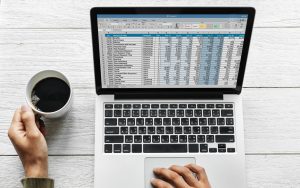Among the most significant sources of almost any organisations is its own time. When employees utilise their workdays nicely, deliverables are created, deadlines are met, budgets are preserved –and finally, the business is thriving. Alternatively, when workers are not spending their time efficiently –or there, however, managers don’t have the total precision to these workers do, then it becomes exceedingly difficult for the company, to quantify up its jobs’ productivity. Companies which don’t see the clock generally neglect.
The vast majority of organisations today still utilise the notion of billing hours to charge clients. Usually, companies are advised to select timesheet intervals or time monitoring modes that fulfil their billing or payroll cycle. So, which are a few of the most common time-tracking variants that organisations utilise?
Daily timesheet:
Daily timesheet is beneficial for advisers or hourly workers who favour precise tracking. This mode offers a fantastic overview of what every worker is working on during the day and day being spent on each task/project. Time is generally entered with the beginning and finish times. The elapsed period is calculated mechanically.
In certain situations, like when workers are spending daily for an offsite training session or functioning in a single event, you might have a very simple timesheet, which requires all participants or employees to signal their activity using the clock in and out software. This enables organisations to monitor the quantity of time worked by each of their workers in the occasion. Furthermore, the daily timesheet may be useful for non-profit organisations which don’t have to cover their members of employees but do want to monitor hours volunteered daily.
Weekly timesheet:
This type of employee timesheet helps organisations and their members of personnel in monitoring and recording the exact quantity of hours worked each week.
Managers and human resource department may utilise this weekly worker timesheet to track their employee’s time and salary on a weekly basis. From time to time, the weekly and daily timesheets may be used together to reach a common objective.
Bi-weekly timesheet:
This timesheet is just like the weekly timesheet; just it is made into two-week intervals which float in your cash. The two weeks can commence on any day of the week or date you select. Managers must adopt This Type of monitoring if they cover or calculate wages every two weeks
Semi-monthly timesheet:
If your company pays its workers twice per month, rather than every two weeks, you might prefer a semi-monthly manner of monitoring time.
Monthly timesheet:
The same as any other easy timesheet, the monthly timesheet monitor work assignments and hours, which makes it simple for organisations to track what their employees are working for the entire month. Each month may be presumed to begin on any date of the month, supervisors prefer.
Punch clock:
Employees utilise this mode of monitoring to put in time in and out as they’d do with a conventional time card system. The same as a physical clock, this electronic time clock records the beginning and cease time using online timer quite correctly. After the day’s work is completed, punch clock entrances are automatically transferred into the worker’s weekly/bi-weekly timesheet for submission and review. For convenience functions, a management edition of the timesheet can be obtained to permit for updates, upgrades, or conclusion of entries that are incomplete.

Overtime situation:
The semi-automatic mode of monitoring is among the simplest and suitable techniques to track your employee’s overtime details. It helps organisations review the exact length for which members of staff have worked tirelessly and automatically evaluate the break-times to be confident they merely cover the productive hours.
Job timesheet:
A job timesheet tracker is useful once an organisation is undertaking a job for a client. Ordinarily, a job runs for a particular time and so, a job timesheet ought to be configurable to be used effectively for this specific project. It monitors and records the time in/out of workers and most importantly, keeps check of the total operating hours. This manner of time monitoring may also be employed by freelancers who want to calculate hours worked on freelance jobs.



